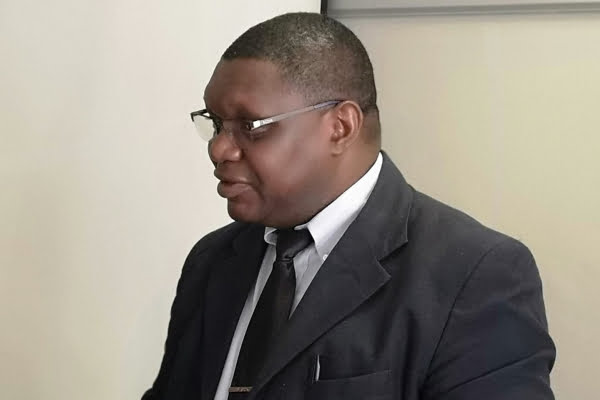The government of Zimbabwe in its quest to formalise and regularize the Artisanal and Small Scale Mining (ASM) sector for mining growth and development has been advised to identify a few small-scale mining projects in the ASM sector to fund in order to set a clear revolution plan.
Rudairo Mapuranga
Critical minerals are used to manufacture advanced technologies including mobile phones, computers, fibre-optic cables, semiconductors, banknotes, and defence, aerospace and medical applications. Many are used in low-emission technologies such as electric vehicles, wind turbines, solar panels, and rechargeable batteries. Some are also crucial for common products such as stainless steel and electronics these include lithium, tantalite, graphite, nickel, copper, and rare earth elements among others.
Currently, the ASM industry has not been attracting enough capital inflow as most miners are using only their savings to fund projects in this capital-intensive sector resulting in low and stagnant growth.
Stakeholders in the mining industry have been advocating for measures and models to be structured and implemented for the country to witness groundbreaking growth in the ASM industry as this will have positive effects on the country’s economic development.
Speaking to Mining Zimbabwe mineral economic expert Lyman Mlambo said identifying these projects would create a database that will be important for planning and identifying potential funders.
“Identifying these projects and documenting their status is an important exercise on its own, as it creates a database for ASM in critical minerals. This database is important for planning the effective participation of ASMs in the green transition, including gender balance as most woman miners are in the ASM sector. Of course, such a database would be useful to financial institutions seeking to support green transition among ASMs.
“Talking of capital flowing into the ASM, financial institutions work with formalized entities – there is a need to ensure that those ASMs working on critical minerals get their papers in order. There are various conventional (well-known) ways of supporting small businesses financially, and these ways can be applied here. The government can create a loan guarantee scheme (guaranteeing loans to be advanced by financial institutions) specifically focused on supporting ASMs mining critical minerals. Government can facilitate the acquisition of investment and operating capital flows into the ASM sector by negotiating and guaranteeing the following: hire purchase agreements; equipment lease agreements; advance payments by buyers of critical minerals which money is used to produce the critical minerals for uptake by the creditors (some kind of a consumer credit); cash advance by mine suppliers to ASMs at nominal or zero interest rates, for purchase of the former’s equipment and consumables and later repayment (suppliers credit); joint ventures; carried interest and free interest (where title holder meet their financial obligations in a joint venture through future profits or conversion of title into capital contribution); angel investors (individual investors into small firms); venture capital finance (limited partnerships specializing in investing in the equity of young firms); etc. Note that all these efforts can be executed without government facilitation or guarantee – these are well-documented or well-known ways of financing small firms. A very important factor to be underscored here is the formalization of the ASMs involved,” Mlambo said.
Lithium miner Shelton Lucas said identifying critical projects can set an example for financial institutions to be attracted by the ASM industry. This will lead to a proliferation in value addition and beneficiation investment overally making the ASM attractive.
“It is a good idea that the government or financial institutions should identify critical mineral projects (lithium, graphite, copper, antimony and nickel) to find them as to encourage capital to flow into the sector.
The major capital funding should be prioritised on beneficiation by concentration of the aforementioned minerals so that they reach the required threshold which is above the rejection grade by so doing also cutting down on logistics and warehousing losses and also hedging the miners. However, this also comes with a lot of challenges whereby if any venture becomes lucrative some of the miners will be disenfranchised by some of the big wigs and subsequent punitive measures will follow the likes of carpeting all probable mining sites with EPOs, statutory instruments against pegging of some of the minerals. The horizontal forward integrations will now encourage private financial institutions to fund or get involved in the financial process.
“The ASM can attract the so much needed capital by forming associations that are miners oriented and have a collective approach in advocating for beneficiation plants because the government is laden with a lot of projects it will take time for them to attend to this plight,” said Lucas.
According to Parliamentary Portfolio Committee on Mines and Mining Development Chairperson Hon Edmond Mkaratigwa, “There is a need for funding and the market is the best source of business financing as it proves the viability of the business while it equally motivates the business owner to deliver.
“The aspect of identifying special minerals is good but it always has to remain a business case except where the benefits will still be strategically derived in the longer term. In that respect, I am saying, we need to continue to look at all feasible resource mobilisation mechanisms available, while at the same time, capacitating our miners so that they are made ready to grow into bigger miners. Capacitation can assist in building the right mindset for business, among those to be funded.”
.png)




